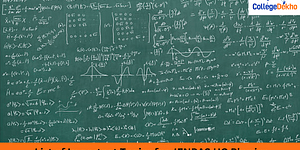Medical Transcription Syllabus & Subjects 2024
Medical Transcription Syllabus & Subjects Overview
The Medical Transcription course syllabus is designed to cover the comprehensive methods and strategies used by a professional to be a successful Medical Transcriptionist. Medical Transcriptionists are the medical professionals who transcribe documents from voice recordings made by medical experts. The documents include detailed procedures, diagnostic tests, and other aspects of medical consultation and treatment. All of these are added to the patients permanent medical file, and then health professionals transcribe this detailed and precise information into a digital or an analogue recorder or through the use of a phone dictation system so that it’s all easy to read and are accurate in manner. These records are collected and then become a permanent part of the patient’s medical file. Office visits, diagnostic tests, consultations, discharge summaries, history and physical examination summaries, admission summaries, surgical reports, expiry reports, referral letters, etc. are included in these detailed reports.
Given the chances of employment, it’s a great opportunity to pursue specialized training in the healthcare industry, especially in the Medical Transcriptionist (MT) sector, and it will only grow exponentially in the next 10 years to come. A Medical Transcriptionist has the ability to focus for extended periods of time, to excel at using reference materials, and to have an ear for different dialects and accents. Also, Medical Transcription is considered one of the top ten home based business growth industries. But before thinking about all of these, the students themselves must be very clear of what theMedical Transcription course consists of and how the subjects in it will help them absorb the different aspects of the healthcare industry.
Table of Contents
Medical Transcription Course Modules
The medical transcription course equips students with the fundamental information, comprehension, and practical attributes needed to accurately prepare patient records while adhering to professional standards and ethical behaviour. This will prepare them for entry-level in-house employment as medical transcriptionists. A medical transcription course typically lasts six months to a year, depending on how much time is spent in the classroom and in the lab. Let us now look at the Medical Transcription course modules. These are divided into two types:
Medical Transcription Course Module 1
The following table shows the Medical Transcription course Module 1:
| Sections | Subjects | Details |
|---|---|---|
| Section 1 | Language Origins and Adaptations |
|
| Section 2 | Word structure and the Dynamics of Medical Vocabulary |
|
Medical Transcription Course Module 2
The following table shows the Medical Transcription course Module 2:
| Section | Subjects | Details |
|---|---|---|
| Section 1 | Introduction, Report Types and Orientation |
|
| Section 2 | Pharmacological Compendium |
|
| Section 3 | Surgical Compendium |
|
Note: Medical transcription courses follow the above curriculum, although the topics covered may vary from one institute to another.
Medical Transcription Course Syllabus
As the Medical Transcription course duration is six months, many colleges and universities have divided the Medical Transcription course syllabus on a weekly basis that may last up to 26 weeks with certain fixed course modules. The following table shows the theoretical trades associated with the Medical Transcription course syllabus along with specifications/detailing of chapters/lessons:
Lesson Number | Name of the Chapter | Specifications |
|---|---|---|
1 | Introduction to Medical Transcription | The history of the profession of medical transcription is studied in this first chapter. Students will learn how the profession changed to take on its present state and examine the many abilities and skills required to become a skilled medical transcriptionist. Students will look at the work that MTs do, potential workplaces, and potential futures for those in this line of employment. |
2 | Tools of the Trade | The tools of the profession are the main topic of this lesson. Students will go over some reference materials and look at the different kinds of websites that MTs utilise for their research. Next, they will study what tools and applications MTs utilise on the job. By the end of this chapter, students should be seated at their computer, watching the Express Scribe programme on their screen while listening to an audio file of actual medical dictation. Students will get to practise resuming, stopping and rewinding the audio while they type while listening to the medical report. |
3 | Understanding Medical Records | In hospitals and clinics alike, medical personnel most usually employ nine different report kinds. Medical letters are not significantly different from regular letters. A few specific pointers on pathology reports and how to work with statistics and measures will be provided at the end of the class. After that, students will get some practice dictating a pathology report and a medical letter. |
4 | Listening Carefully | In this lesson, the topic of efficient listening are covered along with the distinction between hearing and active listening. It will also go over the several problems, such as homonyms, synonyms, and antonyms, that prevent voice recognition technologies from fully replacing people (at least for the time being). Students will discover how to decipher a word or phrase from a jumbled recording using phonetics, vowel sounds, and context. After learning about radiology reports, students will practise transcribing one. |
5 | Grammar, Sentence Structure, and Punctuation | Grammar, sentence structure, and punctuation are some topics that could make anyone wince a little. But this will be simple—possibly even enjoyable—a journey through some of the fundamental writing ideas that students will improve as an MT. After learning about SOAP notes, students will study infectious diseases and drugs in your Practice Corner. In the task that goes along with the course, students will also have the possibility to transcribe a SOAP note and a radiological report. |
6 | Style | This course examines writing and discusses style from the standpoint of the MT. Professionals must adhere to editorial guidelines for spelling, capitalisation, and typographical presentation when transcribing. Students will concentrate on the H&P report and practise transcription in the Practice Corner. |
7 | Medical Terminology and Spelling | One thing is certain no matter what you transcribe: A significant portion of it will use medical language. Remember that autocrats are also not flawless either. It is indeed possible for them to say one thing while really meaning another. Or they may use a word that sounds similar to another word, such as cystectomy and cystotome. If you are well-versed in medical jargon, you can quickly choose the appropriate word to ensure that your transcription is accurate. Then, you will examine the fundamentals of heart disease and its management in your Practice Corner. |
8 | Report Formatting and Word Processing | The organisation of a student's reports are a crucial aspect of MT's functioning. This lesson is all about structuring their reports with headings, subheadings, unique line spacing, page breaks, and other formatting etiquettes. Additionally, students will focus on using word processing templates, AutoText, macros, and shortcuts to streamline their work. They will become quicker and more effective MT if they can master them! The Practice Corner for this course focuses on surgical reports. Understanding surgical jargon and getting a glimpse inside the operating room are intriguing as well as useful. |
9 | Checking Your Work | Editing and correcting your transcription is a crucial additional step. The first part of this chapter covers the dos and don'ts of editing as well as what to look for when proofreading. Students will discuss a disease condition that has, in some manner, affected almost everyone in your practice corner: cancer. They will begin working on the consultation report once they have an understanding of cancer. Doctors usually request additional evaluations from specialists for their patients, particularly those with cancer. So, students will probably be transcribing this report more often. They will get to practise proofreading as well as transcribe a consult report as part of the lesson's homework. |
10 | Classification Systems and Discharge and Death Summaries | This lesson will be entirely clinical. Students will get knowledge of categorisation systems and the shortcomings of their transcribing. Eventually, after a student has got a firm grasp on grammar and style, they will study anatomical skeletons. Furthermore, students will study discharge and death reports in their Practice Corner. Although the reports are remarkably similar, this lesson illustrates the minute variances. |
11 | Infections, Blood, and Cells | This lecture will be similar to the last one in that it will address several clinical aspects. Students will be able to see in their Practice Corner how everything they have studied can be applied to an autopsy report. Students will likely never encounter a report as lengthy and in-depth as this one. Of course, the task will provide them with an opportunity to write an autopsy report. |
12 | The Nuts and Bolts of Working as an MT | Even if students now have the resources and information necessary to dangle their toes in the medical transcription waters, there are still a number of important questions that need to be addressed. In this chapter, they will learn how to manage their workload, along with how to get employment in the profession and all the numerous ways one can work as a medical transcriptionist. Students will discover what it takes to start a career in medical transcription as well as various possibilities for additional training. |
Medical Transcription Subjects
As part of the curriculum, almost every chapter or lesson of the Medical Transcription course syllabus will involve certain collaborative discussions which would help the students understand the subject better. The following are the common Medical Transcription subjects prescribed by several colleges and universities:
Projects on Biodiversity | Recombinant DNA Technology | Principles of Transmission Genetics |
|---|---|---|
Plant Biotechnology | Principles of Immunology & Microbiology | Plant and Animal Tissue Culture Techniques and applications |
Model Organisms in Human Genome Project | Organic Mechanisms in Biology | Microbiology |
Medical Biotechnology | Microbial & Molecular Genetics | Introduction to DBMS, Computer Network & Numerical Analysis |
Introduction to C-Programming and Digital Logic | Introduction to Data Structure & Computer Organization | Introduction to Computer |
Genetic Engineering Techniques | Industrial Biotechnology | Environmental Biotechnology |
DNA Typing, Proteomics & Beyond | Elements of Management & introduction to Entrepreneurship | Dissertation on Biotechnology |
Computational Biology & Bio-informatics | Cytogenetic Techniques | Chemistry |
Biomathematics and Biochemistry | Biotechnology- Social, Legal & Ethical issues | Biodiversity & Taxonomy |
Basic Microscopy & Instrumentation | Animal Biotechnology | Basic Fermentation Techniques |
It must be noted that the above-listed Medical Transcription subjects may differ from one medical college to another.
Medical Transcription Course Syllabus Learning Outcomes
While students pursuing a Medical Transcription course are mostly focused on procuring proper documentation for medical history, they are also determined towards helping patients who depend on accurate medical information to receive high-quality care. Thus, even doctors and other medical professionals highly depend on the responsibilities of a Medical Transcriptionist. This is why, all students in this field are required to nurture proper skills and gain expertise on the subject matter in order to be successful in their career. To do so, everyone must follow and learn the Medical Transcription Syllabus by heart. Hence, mentioned below are some of the Medical Transcription course syllabus learning outcomes that students may expert:
- Genitourinary, otolaryngology, neurology, OB/GYN, orthopaedics, plastic surgery, and dermatology transcription
- General surgery transcription
- Gastroenterology transcription
- Transcription for pathology and epidemiology
- Cardiac and vascular care transcription
- Describe the significance of proper grammar and punctuation
- Compile the reporting and documenting processes
- Compile a list of all the medical terms used in the medical transcript
- Describe the equipment and productivity software
- Enumerate the fundamentals of medicine
- Give examples of business and medical law concerns
- At least 70% proficiency in the lesson content must be demonstrated
- Explain how medical transcriptionists contribute to the health care system, etc.
Popular Courses
- Courses
- Medical Transcription
- Syllabus














